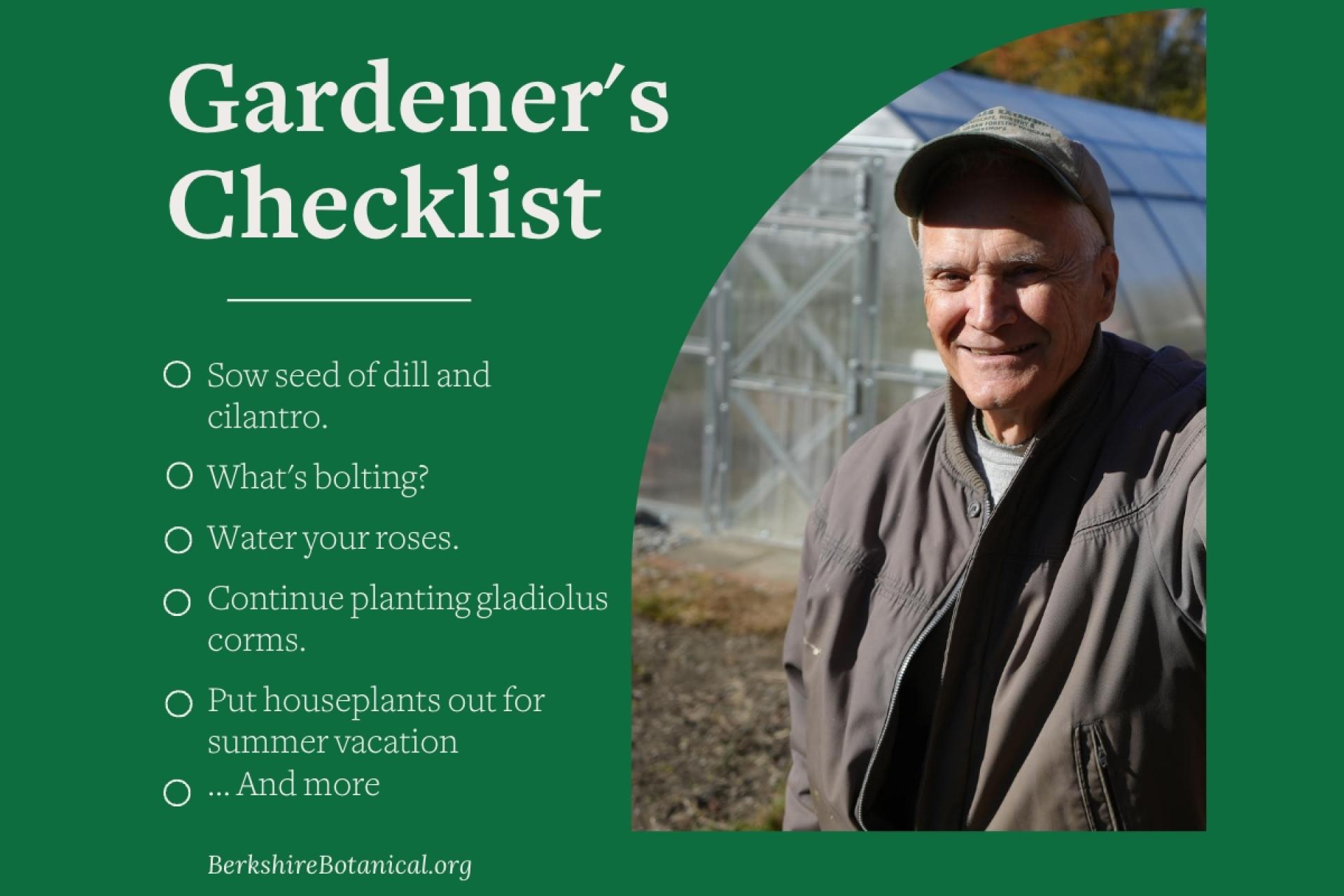You are here
Gardeners Checklist: Here Is What to Do on This Second Week of June
Gardeners Checklist: Here Is What to Do on This Second Week of June
By Ron Kujawski
• Sow seed of dill and cilantro, either in the garden or in pots. Plants from sowings in early Spring are likely to be flowering soon and will set seed. That’s okay if you want to collect and save the seed. But, I also like to use fresh leaves of dill and cilantro to season foods. When in flower the plants do not produce many leaves, so I have to start new plants every four to six weeks.
• Pull up radishes, spinach, arugula and leaf lettuce that are bolting (sending up flower stalks) and plant carrots, beans, or summer squash in their place. Seeds of radishes and leafy greens may also be sown but they will do best if covered with shade cloth or shaded in some other fashion.
• Water roses deeply. They are heavy drinkers. Since they can’t break the habit, a deep watering once per week is recommended. Frequency of watering can be reduced if roses are mulched with a 2 inch deep layer of dry grass clippings or composted wood chips.
• Continue planting gladiolus corms every 7-10 days until early July for a continuous supply of cut flowers through summer. I like gladiolus flowers but when I hear “Good grief, not another vase of gladiolus” I know it’s time to gift these cut flowers to friends.
• Repot and groom houseplants. Then send them outdoors to a shady spot for their summer vacation. Even houseplants need a break from their normal routine.
• Apply a repellent to hostas to protect them from marauding deer. Though wild sources of food abound, deer are attracted to the succulent plants in our gardens. Deer are creatures of habit and once they find a particularly tasty food source, they’ll keep coming back to it. By applying repellents, hopefully that pattern can be disrupted. It’s best to alternate between two different kinds of repellents so that deer don’t get used to one.
• Start a compost pile. Kitchen scraps and yard trimmings make up about 25 percent of all household wastes. Instead of seeing these materials as “wastes”, think of them as raw materials for creating organic matter to be used to improve garden soils. “That’s not a banana peel. That’s potential organic matter for the garden.”
• Carry a container of soapy water when working or just strolling in the garden. Many insect pests can be easily handpicked from plants and then plopped into the water. Right now, cucumber beetles, potato beetles, tortoise shell beetles, asparagus beetles, azalea sawfly larvae, lily leaf beetles, and various caterpillars are waiting to be handpicked. If no critters are found, use the soapy water for a quick bath.
Ron Kujawski began gardening at an early age on his family's onion farm in upstate New York. Although now retired, he spent most of his career teaching at the UMass Extension Service. He serves on Berkshire Botanical Garden’s Horticulture Advisory Committee. His book, Week-by-Week Vegetable Gardener’s Handbook, is available here.
Help Our Garden Grow!
Your donation helps us to educate and inspire visitors of all ages on the art and science of gardening and the preservation of our environment.
All Donations are 100 percent tax deductible.



